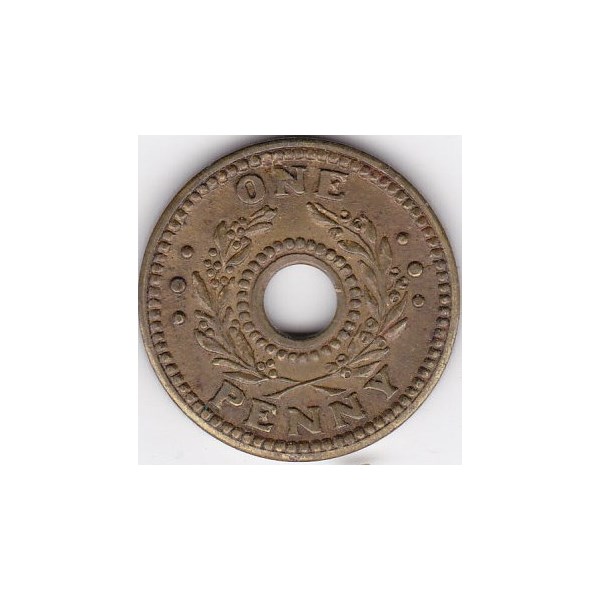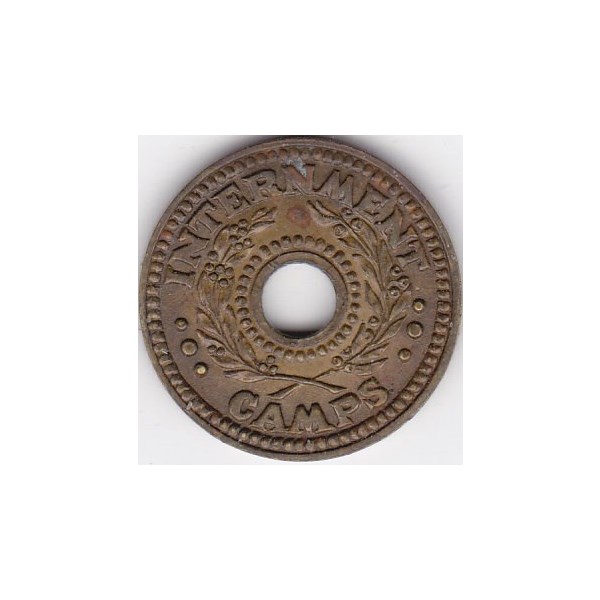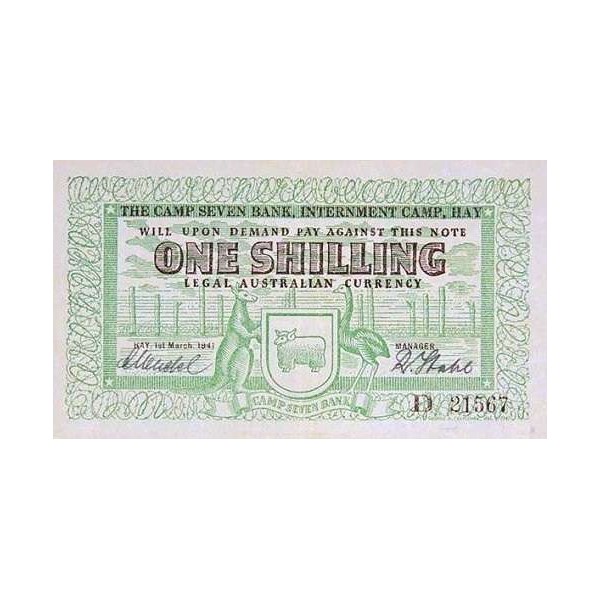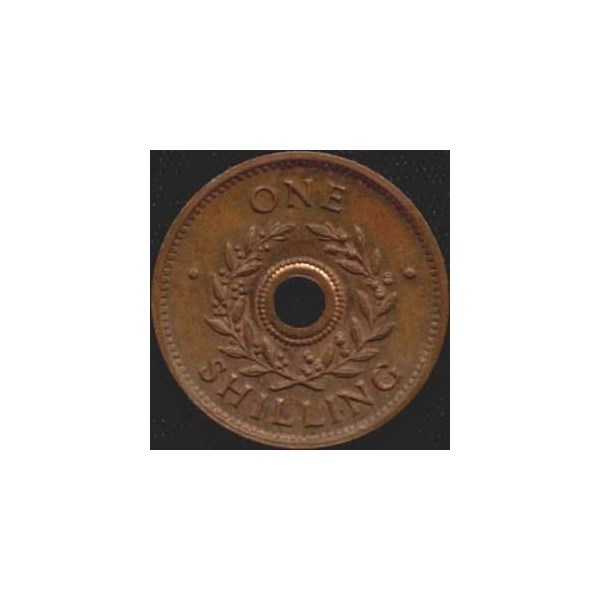With increasing concerns as the pall of WWII settled over Europe, “enemy aliens” in Australia whose loyalty was suspect were removed to Internment Camps. The Camps initially housed immigrants from Germany, Italy and other axis-linked countries. They were subsequently joined by Japanese internees, and prisoners of war and internees transported from the Middle East, Pacific Islands, the Netherlands East Indies, the Straits Settlements, the
United Kingdom and New Zealand.
For security reasons, tokens were used in Australian and New Zealand World War II Internment Camps in place of the normal currency. They were introduced in Australia, probably in 1943, to replace paper canteen coupons.

Internment Camp Nine Pence

Internment Camp One Shilling
Two
Melbourne firms manufactured the tokens: Arendsen & Sons made five shillings, two shillings and one penny pieces; while KG Luke & Co produced the one shilling and three pence tokens that completed the series. Other than the pennies, which were struck in brass (with a few rare copper or bronze trial or specimen strikes), the tokens were struck in copper.
The tokens were holed in the centre, clearly distinguishing them from the circulating currency. Wreaths, ornamented with berries and gum nuts, surround the centre holes together with the inscriptions of “INTERNMENT CAMPS” on the obverse and the denomination on the reverse. The Luke tokens have finer design details than the Arendsen pieces.
Fortunately, a small number of tokens avoided the destruction of the series that followed the end of World War II, when the tokens were ordered in by the Army and melted down under supervision.

My Internment Camp One Penny side A

My Internment Camp One Penny side B
This Token above was collected by my Father when he was stationed at Cowra, fortunately he was transferred to the
camp at Aspley Qld two days before the Cowra Breakout
As Australian currency was forbidden in the
Hay Internment
Camp the ingenious internees designed their own currency which was printed by the local newspaper the Riverine Grazier. Notes in the denominations Sixpence, Shilling and Two Shillings were produced from designs prepared by Georg Telscher, who had contributed to Austrian note designs in the 1930's.
The cunning designs incorporated a number of hidden messages. In the barbed wire around the edge of the note can be read "We are here because we are here". In the barbed wire at the foot of the fencing can be read "HMT (His Majesty's Troop Ship) Dunera, Liverpool to Hay". Woven into the fleece of the sheep on the back of the note are the names of some of the internees. It has also been suggested that the barbed wire behind the Coat of Arms hides a message in morse code!

No. 7 Internment Camp at Hay Six Pence

No. 7 Internment Camp at Hay One Shilling

No. 7 Internment Camp at Hay Two Shillings
The notes only circulated for about three months in 1941 before a
Sydney newspaper published a picture which alerted Commonwealth authorities who promptly stepped in and initiated the withdrawal of the issue as it contravened Australia’s currency legislation. Only a small number of these historic notes, souvenired by the inmates, have survived.

Hay Internment Camp Token 5 Shillings
The 5/-
Hay Internment
Camp Token. Minted by R. Arendeen & Sons Pty Ltd of Malvern, Victoria

Three Pence

One Shilling
The 1/- & Three Pence
Hay Internment
Camp Token. Minted by K. J. Luke & Co. Ltd of Fitzroy, Victoria
It is wrong to suggest that the tokens were only used at
Hay, as is sometimes the case, although tokens counterstamped “H” for the
Hay Camp are understood to exist.
Internment Camps were located across Australia, with the main ones at Cowra and
Hay in NSW, Enoggera (Gaythorne) in Queensland, Tatura (Rushworth) in Victoria and Loveday in South Australia. There were other smaller or temporary Camps (such as Long Bay in
Sydney and Dhurringile in Victoria) that accommodated POWs and internees, often before they were transferred to one of the larger Camps.
The Harvey
Camp in Western Australia was closed in 1942 after the discovery of hidden weapons and a finding by military authorities that
Camp administration was inadequate. The internees were transferred first to Parkeston near Kalgoorlie and then to Loveday.
In January 1943, some 17,000 POWs and internees were in the Camps.
You can read some more files on a page of my website, these files will be available for one month only, use your back button to return to the
Forum.
View Files
HERE
.